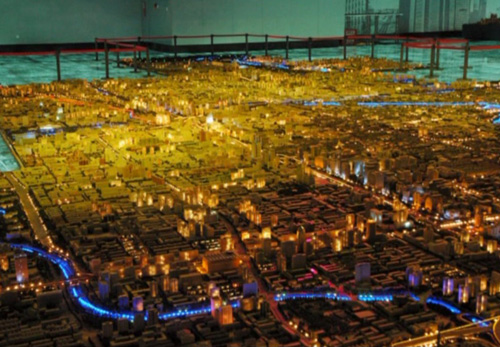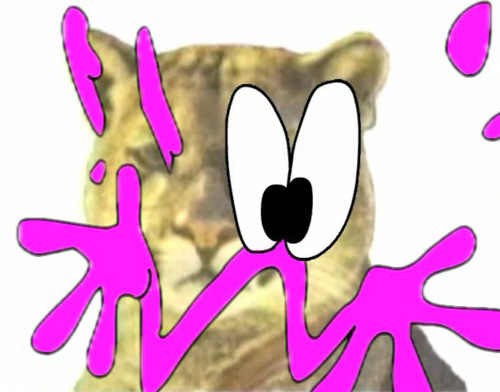
When the staff of the New York Underground Film Festival decided to end the fifteen-year-old institution and start fresh, they named their new venture Migrating Forms. The title of the new festival, which debuted last week at Anthology Film Archives, resonates with the theories that heavyweight curators like Roger Brueghel and Nicolas Bourriaud have proposed to describe art-making in conditions of international interconnectedness, where a finite number of cultural models yield a seemingly infinite number of variations. The term “migrating forms” could also refer to the travel of moving-image art between gallery and cinema, or describe aspects of films in the festival program, from the content of documentaries like Lucy Raven’s China Town, a stop-motion photographic animation about the U.S.-China copper trade, to the form of shorts that repurposed found footage, like Jesse McLean’s Somewhere Only We Know, which included a montage of reality-show contestants’ faces as they are kicked off television.
Oksana Bulgakowa’s The Factory of Gestures, based on her book of the same name, explored how Russian and Soviet cinema manufactured and recalibrated codes of body language over eighty years of social upheaval. Running commentary explained gestures’ shifting meanings, and the replacement of the films’ sound with a spare, atonal score helped separate the actors’ motions from narrative. The subject matter of The Factory of Gestures had limited appeal for the experimental film crowd (I was the only viewer at the Saturday afternoon screening), but Bulgakowa’s work suggested an interesting direction for creative presentations of scholarly research.

The lecture format appeared again in Oliver Laric’s Versions, a pithy essay on the irrelevance of the notion of authenticity and the “animistic” attitude that has taken shape in response to the boundless online population of modified images; Laric’s examples included the infamous manipulated photographs of an Iran missile test and collages of celebrity heads on porn-star bodies. Other works programmed alongside Versions in Saturday night’s “Mixed and Maxed” programs, such as Jacob Ciocci’s The Peace Tape, effectively remixed images to evoke an influx of information.
Later that night, contestants tried to outdo each other’s selections of weird, gross, and funny videos from the internet in the “Tube Time” competition, a holdover from NYUFF. It came down to a standoff between Team Ed Halter and Team Ben Coonley. Halter introduced “The Terminator,” three minutes of a man playing with a two-foot-long dildo, so big that its movements inside his abdomen could be seen from the outside. Though it was indisputably the freakiest clip shown that night, “The Terminator” was too much for viewers to stomach, so to speak, and they threw their support behind Coonley, who screened an embarrassing home video of a mother berating her eighteen-year-old daughter for meeting up with strangers from the internet. It was recorded by the girl’s brother as he taunted her with a litany of “Myspace,” “rape,” and “in the butt.”
My Happy Family from Nina Schwanse on Vimeo.
Found footage wove through Sunday’s lineup, too. The group 16beaver presented clips that its members had selected to reflect on the idea of occupation, both oppressive and subversive. There was a short film on Palestinian resistance with a nineteenth-century German lied on the soundtrack, and a decade-old video of artists talking about how the authorities had thwarted their attempts to stage an exhibition in an abandoned building on the Lower East Side. “Mature Audiences,” a program of shorts loosely gathered around the theme of performed emotion, featured two adapted home movies. Michael Robinson ’s Carol Anne is Dead used footage of children’s histrionic play-acting, while Nina Schwanse’s My Happy Family shows a girl awkwardly pronouncing lines about her ideal date and her dream wedding, prompted by her off-camera parents.
Light editing was all that distinguished Schwanse and Robinson’s works from Coonley’s winning “Myspace in the butt” video. Both had finales that declared the artist’s touch: Robinson added a bit of swelling Hollywood music, and Schwanse let the audio roll over a still of the girl’s tired face. It’s not a new idea that montage makes meaning, but it was interesting to watch appropriation-based video art in the context of the non-artistic approaches to juxtaposing media offered by Bulgakowa and 16beaver, and documentary filmmakers who asserted their artistry with “special effects,” namely Raven’s stop-motion animation in China Town, and Michael Gitlin’s use of filters and non-diegetic sound in The Earth Is Young, the film about creation science that closed the festival. If there’s a common contemporary sensibility to be gleaned from Migrating Forms, then it’s in artists’ use of the defamiliarizing devices of twentieth-century modernism as a response to the twenty-first century’s overwhelming visual environment, which Laric described so succinctly in Versions as a limitless field of images that produces equally limitless realities.

